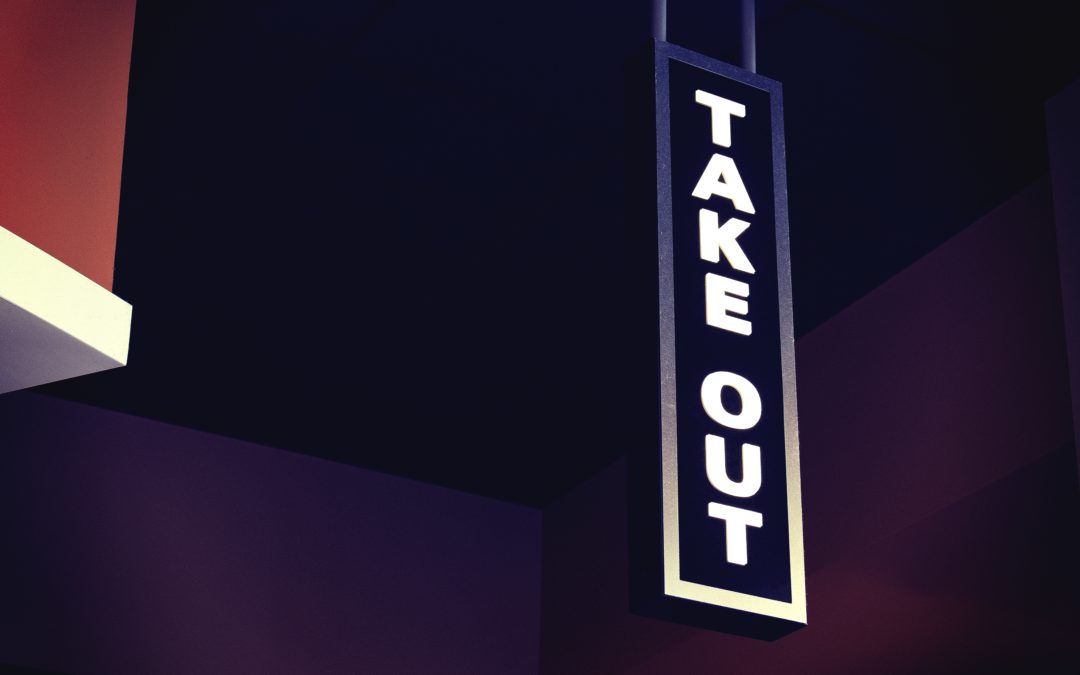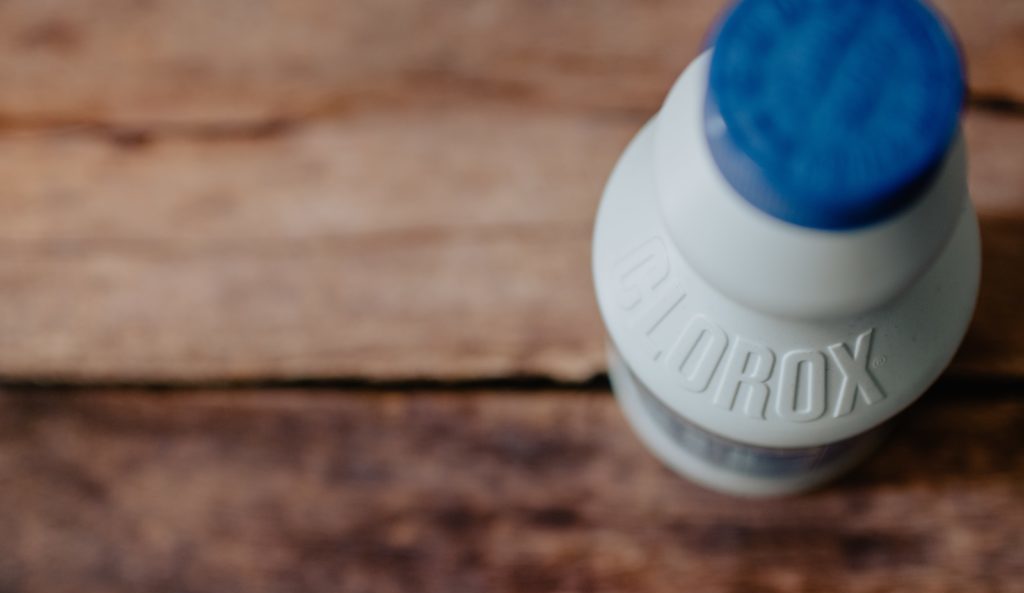If your restaurant is still offering takeout during the COVID-19 pandemic, there are coronavirus cleaning measures you can take to reduce risk to your employees and customers.
As the COVID-19 pandemic ramps up in the United States, restaurants are taking more precautions than ever to ensure the safety of customers and staff. Takeout-only is a new guideline instituted by many states, and services like GrubHub and UberEats have waived fees for restaurants to make this even easier. But restaurateurs should still be wary about the environment within their restaurant and the hygiene of their employees during these uncertain times.
Breweries were some of the first places to take coronavirus cleaning and distancing precautions because they often gather crowds. Upon the initial outbreak, the typically crowded Treehouse Brewing Company in Massachusetts closed their taproom and erected a wall with hinged windows to avoid direct face-to-face contact in their can line. They also set up taped markers so that those choosing to wait in line would need to stand ten feet apart. Meanwhile, Chambers Bay Distilling in Washington started giving away hand-sanitizer made from their sills, the 95% proof stuff they can’t use. This was at least a week (a long time in COVID-19 times) before restaurants seemed to take any precautions at all.
The impact to the hospitality industry isn’t good, and the outlook is worse. Just ask the panicking Airbnb hosts across the world whose income has come to a halt while their mortgages persist. Airbnb has been extending its extenuating circumstances clause to all guests, sending emails to them offering 100% penalty-free cancelations, regardless of the owner’s cancellation policy.
As you can see, there are certainly a lot of areas we could touch on in regards to COVID-19 coronavirus cleaning, and we likely will in the coming weeks, but as most businesses will soon close for the foreseeable future, including most listed above, let’s focus on the businesses who both persist and are also most at-risk for both employees and staff: restaurants, inside dining rooms and takeout.
Make sure your cleaning team has the information they need to complete their job accurately and thoroughly. Implementing a janitorial software like Janitorial Manager can effectively transform your cleaning operation!
Important steps for restaurants in coronavirus cleaning protocol
Some precautionary measures we’ve seen from our own local restaurants include:
- Takeout only, with delivery to your parking spot so nobody goes inside
- Distancing between employees indoors by 6-10 feet
- Gloves are worn, sometimes masks, for preventing the spread of respiratory droplets on food
- Paid sick leave for any employees feeling under the weather
- Bathrooms closed for use (appropriate for takeout only)
- Accepting credit cards only to avoid handling of cash
- Taking people’s temperatures before allowing people to enter
Facts to Know
If you run a restaurant or are responsible for cleaning one, here are some updated facts you should know:
For some time, there was no confirmation on which products could kill the virus and many suggestions that standard Lysol or other similar products would not. Luckily the EPA released a list of confirmed agents that will effectively kill SARS-CoV-2, the virus that causes the COVID-19 illness. They say, “when purchasing a product, check if its EPA registration number is included on this list. If it is, you have a match, and the product can be used against SARS-CoV-2.” Lysol is 777-99 and is marked as qualifying for their Emerging Viral Pathogen Claim, meaning it demonstrated efficacy against a harder-to-kill virus than the enveloped human coronavirus.
ServSafe also has some guidance, which includes providing additional napkins for customers in case they sneeze, providing hand sanitizer at all registers, and of course, sanitizing surfaces often. If there is an event with bodily fluids, quarantine the area, and make sure the employee who is cleaning up the space is using Personal Protective Equipment (PPE). Our addition to this is that if you’re still welcoming customers into your establishment, you should also be sanitizing surfaces with fresh wipes in between each customer.
The CDC is undoubtedly the best source of information on the topic, and their advice is, “The best way to prevent illness is to avoid being exposed to this virus.”
Keeping Employees Safe
So first, let’s talk about your restaurant employees. If your restaurant is offering takeout, your workers will be exposed, as will your credit card machines and cash registers and the air in your contained space (because the virus is airborne and can live in the air for up to three hours).
Additionally, ethanol-based hand sanitizers can take up to four minutes to become effective, according to the Center for Infectious Disease and Research. Handwashing with soap, however, can deactivate certain viruses within 30 seconds.
You should be concerned if your restaurant is busy with takeout orders, and you have multiple employees in a shared space, because the above measures may become exhausting and poorly followed.
How to Properly Disinfect
In regards to surface coronavirus cleaning, according to the CDC guidelines, when cleaning surfaces in your restaurant, kitchen, and takeout counter, you’ll need to use a detergent or soap and water prior to disinfection.
We now know that the fat in soap is one of the best weapons against coronavirus, so it’s important to clean before you even disinfect.
After cleaning, for disinfection, “diluted household bleach solutions, alcohol solutions with at least 70% alcohol, and most common EPA-registered household disinfectants should be effective.” They also offer a recipe for a bleach solution: ⅓ cup of bleach per gallon of water is “expected to be effective against COVID-19 based on data for harder to kill viruses.”
*Note: NEVER mix bleach with ammonia, acids like vinegar and window cleaner, or alcohol. The combination can form irritating and potentially deadly gasses.
Items that can be laundered should be using the hottest water setting and dried thoroughly.
According to the CDC, “Coronaviruses are generally thought to be spread from person-to-person through respiratory droplets. Currently, there is no evidence to support transmission of COVID-19 associated with food.”
For items that come in contact with people’s food, like disposable cups, cutlery, containers, plastic bags, and all of those in-between items that can be contaminated by a single person coughing or sneezing within 6 feet of them, cover them. Since these items can’t be disinfected, the best course of action is to disinfect the surface they’re on and covered by using the above protocols.
We’re all in this together, and as disconcerting as the situation can be, there is a lot we can do to prevent the spread of this virus.
Make sure your cleaning team has the information they need to complete their job accurately and thoroughly. Implementing a janitorial software like Janitorial Manager can effectively transform your cleaning operation!


